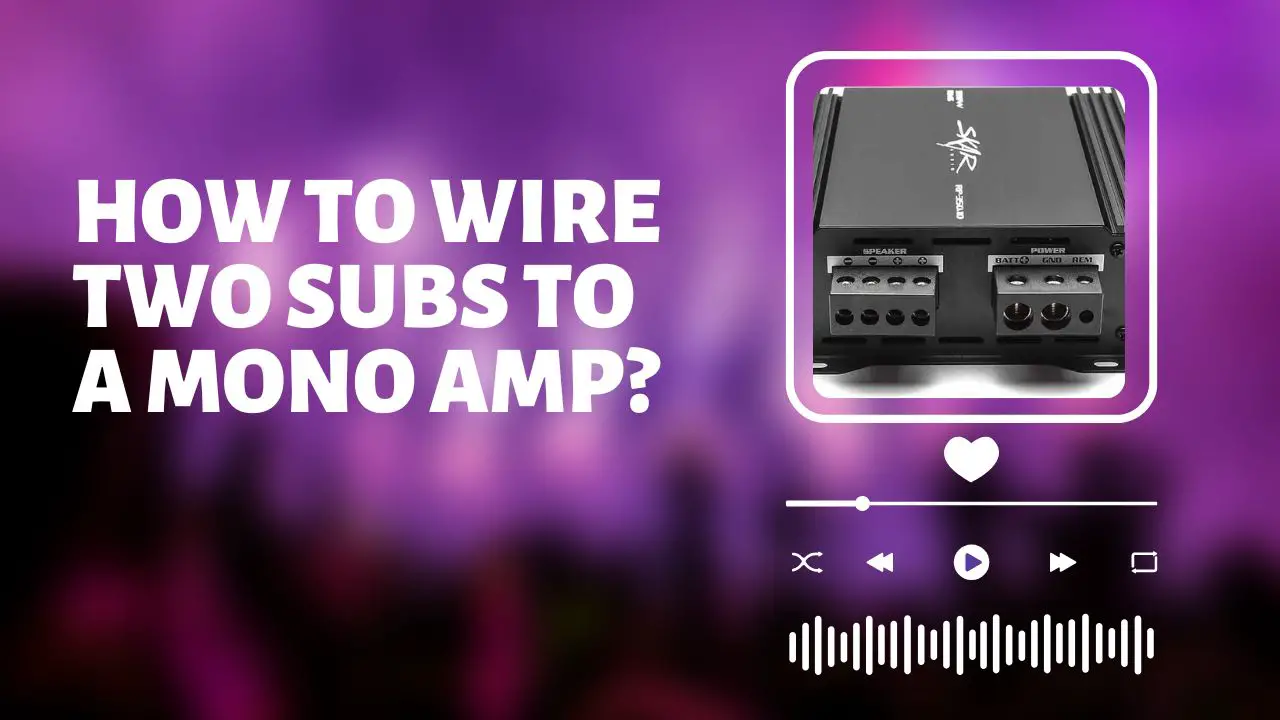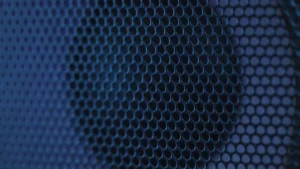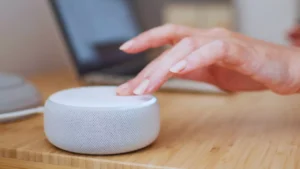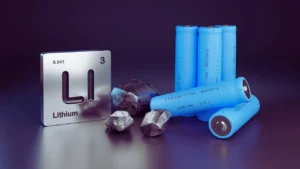When it comes to connecting two subs to a mono amp, the process is relatively straightforward. All you need to do is select the appropriate wiring method, which can either be in series or parallel, depending on several factors.
Are you looking to give your car or home audio system a bass boost? One effective solution is to wire two subs to a mono amp. But where do you begin? Fear not, for I’ll be your guide in this article, walking you through every step of the process. From selecting the right subwoofers to choosing the best wiring configuration and even providing some troubleshooting tips, I’ve got you covered. So let’s dive in and get your audio system booming with bass.
In This Article:
What is a Mono Amp?
When it comes to audio amplifiers, a monoblock amplifier, or mono amp, is a specialized amplifier that’s designed to deliver power to a single speaker or channel. Unlike stereo amplifiers that cater to two separate speakers or channels, mono amps are built to provide maximum power to a single speaker or subwoofer. They’re particularly popular in-car audio systems to drive subwoofers and produce the low-frequency bass that audiophiles crave. Furthermore, mono amps have wide-ranging applications in professional audio setups and home theater systems to power large and high-performance speakers.
Can You Connect 2 Subs to a Mono Amp?
Yes, it is feasible! A mono amplifier is engineered to energize one or more low-frequency speakers. It is an ordinary preference for low-frequency speakers due to its ability to supply plentiful energy and their tendency to be more efficient than amplifiers with multiple channels.
Benefits of Wiring 2 Subs to a Mono Amp
Wiring two subs to a mono amp can provide several benefits, including:
- Increased volume: Two subs can produce more sound than one, which can enhance the overall listening experience.
- Improved bass response: Two subs can provide a more even bass response across a wider range of frequencies.
- Better power handling: By sharing the power from the mono amp, each sub can handle more power without distortion.
What to Consider When Connecting 2 Subs to a Mono Amp
Before you start wiring, there are a few things to consider:
- Impedance: Make sure the impedance of the subs matches the impedance of the mono amp. Most mono amps are designed to handle 2 or 4 ohms of impedance.
- Power handling: Choose subs that can handle the amount of power that the mono amp can provide.
- Wiring options: Decide whether you want to wire the subs in series or parallel, which we’ll discuss in the next section.
Choosing the Right Subwoofers
When choosing subwoofers for your mono amp, there are a few factors to consider:
- Size: The size of the subwoofer will affect its performance. Larger subs can generally handle more power and produce deeper bass.
- Type: There are several types of subwoofers, including sealed, ported, and bandpasses. Each has its own strengths and weaknesses, so consider which type will work best for your system.
- Sensitivity: Sensitivity is a measure of how efficiently the subwoofer converts power into sound. Look for subs with higher sensitivity ratings for better performance.
Wiring Configurations
There are two main wiring configurations for two subs and a mono amp: series and parallel.
Series Wiring
When it comes to wiring subs in series, the process is like linking a chain, with each sub connected one after the other. To get started, you’ll need to connect the positive terminal (+) of the first sub to the mono amp’s positive terminal (+). Then, connect the negative terminal (-) of the first sub to the positive terminal (+) of the second sub. Finally, connect the negative terminal (-) of the second sub to the mono amp’s negative terminal (-).
It’s worth noting that series wiring can increase the overall impedance of the subs, which in turn, may reduce the amount of power they receive from the mono amp. However, the payoff is that it can often lead to better sound quality, particularly for music genres that require tight and punchy bass.
Parallel Wiring
When it comes to parallel wiring subs, each sub is wired to the mono amp while maintaining its individual impedance. This is achieved by connecting each sub’s positive terminal (+) to the mono amp’s positive terminal (+) and each sub’s negative terminal (-) to the mono amp’s negative terminal (-).
Parallel wiring is often preferred as it can provide more power to each sub, making it generally more efficient than series wiring. However, it’s worth noting that this type of wiring can result in a less defined bass response, which may not be suitable for certain music genres.
Wiring Process
Now that you’ve chosen your subs and wiring configuration, it’s time to start wiring. Here’s how:
- Turn off your audio system and disconnect the negative terminal (-) of your car battery (if applicable) to avoid any electrical mishaps.
- Determine the wiring configuration you want to use (series or parallel) and connect the positive (+) and negative terminals (-) of each sub to the corresponding terminals on the mono amp.
- If you’re using series wiring, connect the positive terminal of the first sub to the positive terminal (+) of the mono amp, and the negative terminal (-) of the second sub to the negative terminal (-) of the mono amp.
- If you’re using parallel wiring, connect the positive terminal (+) of each sub to the positive terminal (+) of the mono amp, and the negative terminal (-) of each sub to the negative terminal (-) of the mono amp.
- Double-check all of your connections to make sure they’re secure and that no wires are crossing or touching each other.
- Turn on your audio system and test the subs to make sure they’re working properly. Adjust the gain and volume controls on the mono amp as needed to achieve the desired sound.
Troubleshooting Tips
If your subs aren’t working properly after wiring them to your mono amp, here are a few things to check:
- Make sure the impedance of the subs matches the impedance of the mono amp.
- Check your wiring connections to make sure they’re secure and correctly wired.
- Adjust the gain and volume controls on the mono amp to make sure they’re set correctly.
- Check the power source and fuses to make sure they’re functioning properly.
Conclusion
Wiring two subs to a mono amp can be a great way to enhance the bass in your audio system. By following these steps and considering the factors outlined in this article, you can wire your subs to your mono amp with confidence. Remember to take your time and double-check your connections to avoid any electrical mishaps. Happy listening!
FAQs
How do you bridge two subs to a mono amp?
To bridge two subs to a mono amp, connect the positive terminal of one sub to the positive terminal of the other sub, then connect the remaining terminals to the positive and negative speaker terminals on the amp.
What Is the Maximum Number Of Speakers That Can Be Wired To A Monoblock Amp?
The maximum number of speakers that can be wired to a monoblock amp depends on the amp’s power output and the impedance of the speakers. Consult the amp’s manual for specific instructions.
Is a Mono Amp Enough to Power Two Subs for Bass Frequencies?
Yes, a mono amp can power two subs for bass frequencies. However, the amp’s power output and the subs’ impedance and power handling capabilities should be taken into consideration for optimal performance.
Which Is Better For 2 Subs: A Mono Amp or A 2-Channel Amp?
A mono amp is generally better for powering 2 subs because it can provide more power and is designed specifically for subwoofers. A 2-channel amp would divide the power between the two subs.





